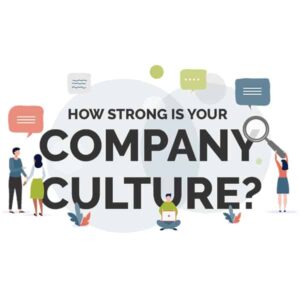The Real Cost of Employee Turnover in 2021
Posted on November 4, 2020

Today, people are leaving their jobs at a higher rate than ever before. In April of 2020, 1.9 million people quit their jobs in order to find something else. Then in August of the same year, that number increased to 2.8 million, according to the Bureau of Labor Statistics (BLS). Along with rising turnover rates, the cost of employee turnover has risen, as well.
Millennials, in particular, are prone to job-hopping, as 6 out of 10 of them are open to new job opportunities, and their generation is the most likely to switch jobs, Gallup reports. A lack of employee engagement is hurting people’s loyalty to their companies. Gallup reports only 15% of employees worldwide are engaged at work, and 51% of employees are actively looking for new jobs.
High turnover trends are hurting businesses—not just in terms of money and time lost, but in decreased morale and productivity. Here’s a look at the true cost of employee turnover and the strategies your business can use to improve retention.
What is Employee Turnover?
Employee turnover happens two ways: voluntarily and involuntarily. Voluntary turnover is when an employee decides to leave an organization. Involuntary turnover is when an employer terminates an employee. Both are incredibly expensive.
What causes employee turnover?
A few common reasons for voluntary turnover include:
- The employee is approached by a company and is offered a better job
- The employee no longer wants to work for their current company
- The employee has been actively searching for a new opportunity and gets a job offer
Some causes for involuntary turnover include:
- Poor performance, due to being the wrong hire or a lack of training
- Violating employee guidelines
- Creating conflict in the workplace
Your organization should always strive to lower your turnover rate. Ways to decrease employee turnover include improving your workplace and investing in better hiring and training processes. Offering remote work or flexible work schedules has also been shown to decrease turnover by 25%, according to Owl Labs’ “State of Remote Work.”
How to calculate employee turnover rates
One way to calculate employee turnover is to measure the quits rate. The BLS defines the quits rate as the number of quits in a month as a percent of total employment. You can use this type of formula to measure both voluntary and involuntary turnover.
Note that for some industries, turnover is expected to be higher. Retail, leisure and hospitality, and accommodations and food service are the industries with the highest amount of quit rates, according to the BLS.
Some reasons for higher turnover might be that your business is primarily seasonal, or you tend to employ younger, entry-level workers.
How much does employee turnover cost?
The cost of employee turnover can be astronomical. Turnover costs can include things like advertising for an open job position, the time it takes to recruit and interview candidates, the fees related to background checks and drug screenings, and the fees to administer pre-employment assessment tests. There’s also an impact on productivity while a replacement is being recruited and hired, as well as a potentially negative effect on company culture and team morale.
Here are some more costs to be aware of:
What is the average cost of replacing an employee?
According to Employee Benefit News, employers spend an average of 33% of a worker’s annual salary to replace just one employee. Let’s put that into perspective:
- It will cost $12,000 to replace an entry-level employee making $36,000 a year
- It will cost $20,000 to replace a manager making $60,000 a year
- It will cost $50,000 to replace an executive making $150,000 a year
For companies to reach a break-even point on managers they hire, it takes an average of 6.2 months due to costs incurred. That’s if the manager even stays at the company that long. Bamboo HR reports 31% of people have left a job within the first 6 months, and 68% of those people left within 3 months.
What’s the average cost of turnover for an hourly employee?
It’s expensive to replace even hourly employees, as Investopedia reports, the turnover of an $8/hour employee can cost a business around $3,500. On top of that, companies also spend an average of $1,886 and 47.6 hours a year training each hourly employee.
What’s the cost of high turnover?
When your turnover rate is high, it’s not just the costs of replacing employees that you have to worry about. You also have to add up the costs of things like:
- Damage to your company’s reputation, which makes it harder to attract top talent
- Resentment and burnout, as workers scramble to make up the work of the person they’ve lost
- Internal rumblings, as current employees wonder if they should jump ship too, can negatively impact productivity as your current workers start job-searching
High turnover can be extremely expensive for companies and can create a chaotic situation for HR professionals. Staff, reputation management, training costs, and HR hours are all factors in high turnover consideration.
How does turnover affect a company?
A study published by the European Journal of Business and Management illustrated some of the negative effects of high turnover on employee morale, productivity, and company culture. For example:
- Turnover can harm customer service and quality, which are direct expressions of the company, and cause the company to lose a competitive advantage
- Turnover typically causes a lack of motivation and low morale
- A lack of employee confidence and low morale is correlated with lower profits
When an employee leaves involuntarily, other employees might speculate that they’re next on the chopping block, which can heighten anxiety and motivate job searches. They also may fear that new hires might outperform them, which can also lead to tension and new competition among coworkers.
Employees still working for you won’t want to do extra work without being compensated. Employees who see their peers voluntarily leaving may wonder if there are better opportunities out there for them, too. These are all concerns you should be aware of regarding high turnover.
How to Reduce Employee Turnover
Reducing employee turnover will help your business save money. Turnover reduction can help you keep employee morale high and can improve your business reputation for talent considering your company.
Fostering a positive company culture, keeping employees engaged and helping employees develop with your company benefits your business in the long run. Here are some tips to reduce employee turnover.
Offer competitive pay and benefits to your employees
A 2018 survey of 16,500 job switchers found 30% of leaving employees mentioned pay as a reason for leaving, Fortune reports. Industry averages are publicly available, so if your employees know you’re shorting them, they might start looking elsewhere for work.
You also need to be aware of recruiters who are going after your top talent. According to a report by professional networking site LinkedIn, 87% of all workers are open to new job opportunities. If your employees are approached and offered better pay and benefits, they might bolt.
Another LinkedIn report revealed how important benefits are: 44% of employees say benefits like paid time off, healthcare and parental leave make up one of the top factors keeping professionals at a job for more than 5 years. Benefits are more important to workers than perks like a gym or free food.
Low unemployment levels mean employees can be more selective in how they compare companies. Pay and benefits can be differentiating factors.
Improve company culture at your organization
The LinkedIn report also shows how influential an organization’s culture is. According to LinkedIn:
- 51% of professionals say they’re proudest to work at companies that promote flexibility and work-life balance.
- 47% say they value companies that foster a welcoming culture.
- 46% of professionals want to work for a company where they can make a positive impact on society.
Your culture should be reflected in everything from your branding and website to recruitment and hiring practices. Survey your employees about what they want out of a company culture, and start implementing positive change.
Commit to employee development
Your employees want the opportunity to grow on the job. According to LinkedIn’s 2018 Workforce Learning report, 94% of employees stay at their jobs longer if they received employee development opportunities. A 2018 report by Gartner echoed that – 40% of voluntarily leaving employees said a lack of career development was a reason why they left.
Create employee development plans with employees when they’re hired. They can share how they want to grow in their positions, and their managers can help facilitate the tasks needed to develop.
Listen to your employees
You won’t know what your employees value if you don’t ask them. Regularly check in with surveys. You can do these anonymously to encourage honest feedback and use a tool like Google Forms to gather feedback.
Share feedback results company-wide, and explain what you’re doing to listen to your employees. As employees see their ideas in action, they’ll feel more valued at your company.
Staffing Solutions for Your Organization
Employee retention efforts should be at the forefront of your business strategy. You want to keep your best talent, make your organization an attractive place to work for, keep employee morale high, and cut down on costs, wasted time, and productivity losses due to turnover.
Take the Quiz: How Strong Is Your Company Culture?
Do office politics and gossip rule your office? Do employees have opportunities for continued learning and clear paths for advancement? Do you have defined values that resonate with employees? If you’re curious how strong your company culture is, take our quiz to find out.
If your organization would benefit from some help in decreasing employee turnover, find one our branches today. We can provide market insight, competitive compensation data, and staffing solutions that can help your business.
For more HR insights like these, check out our free HR HotSpot webinars, on topics including leadership development, pay, and benefits trends and talent acquisition strategies.
Categories: Employee Development
Tags: cost of turnover, employee churn, employee development trends, Employee Turnover





